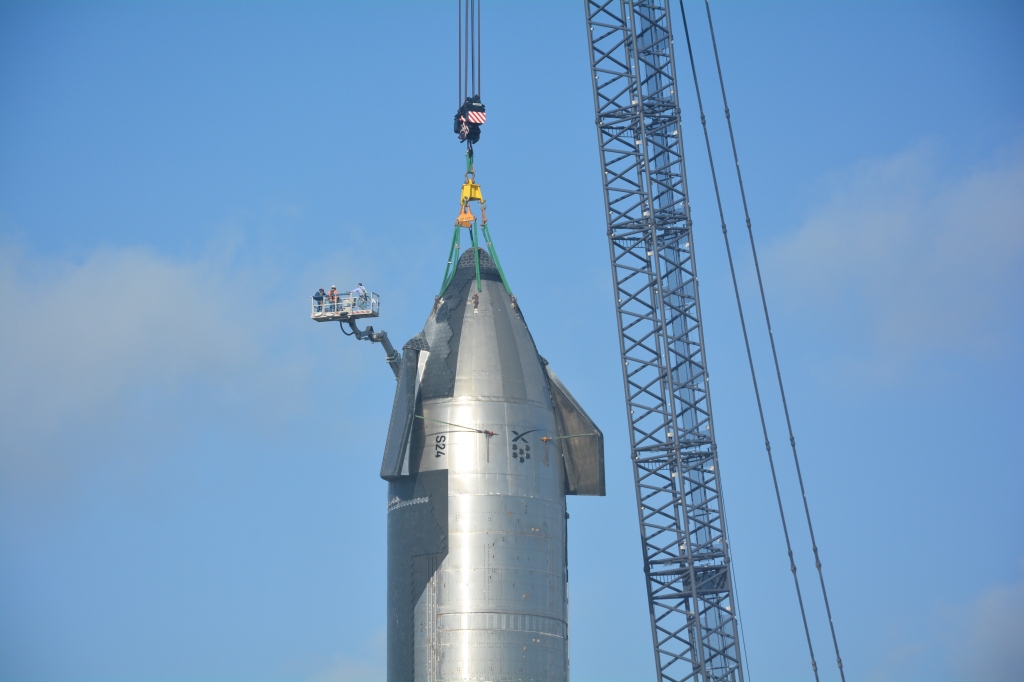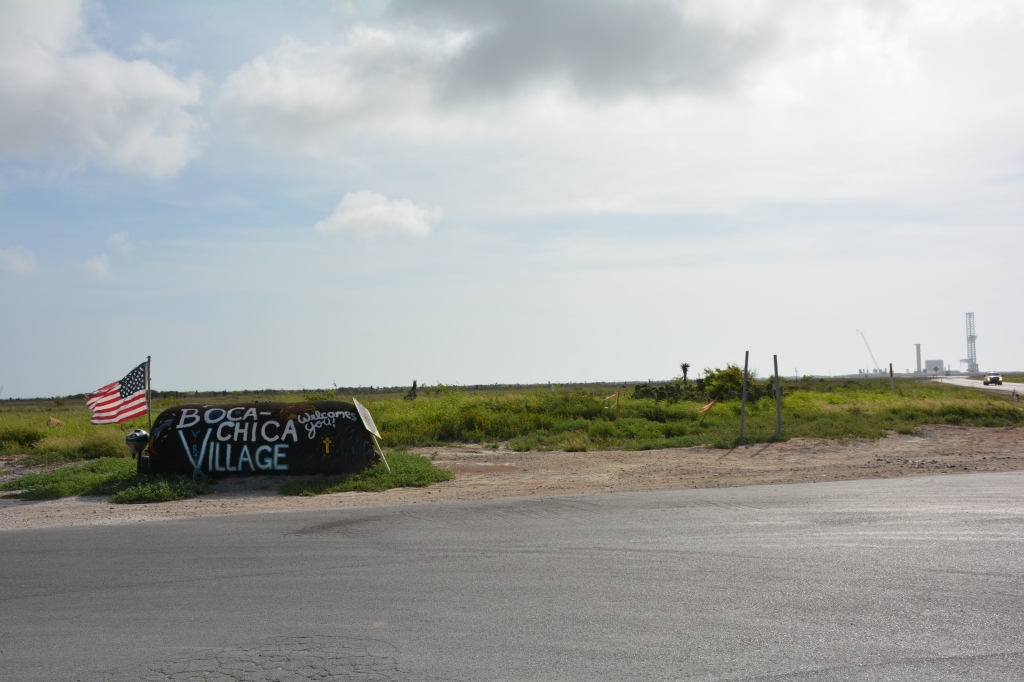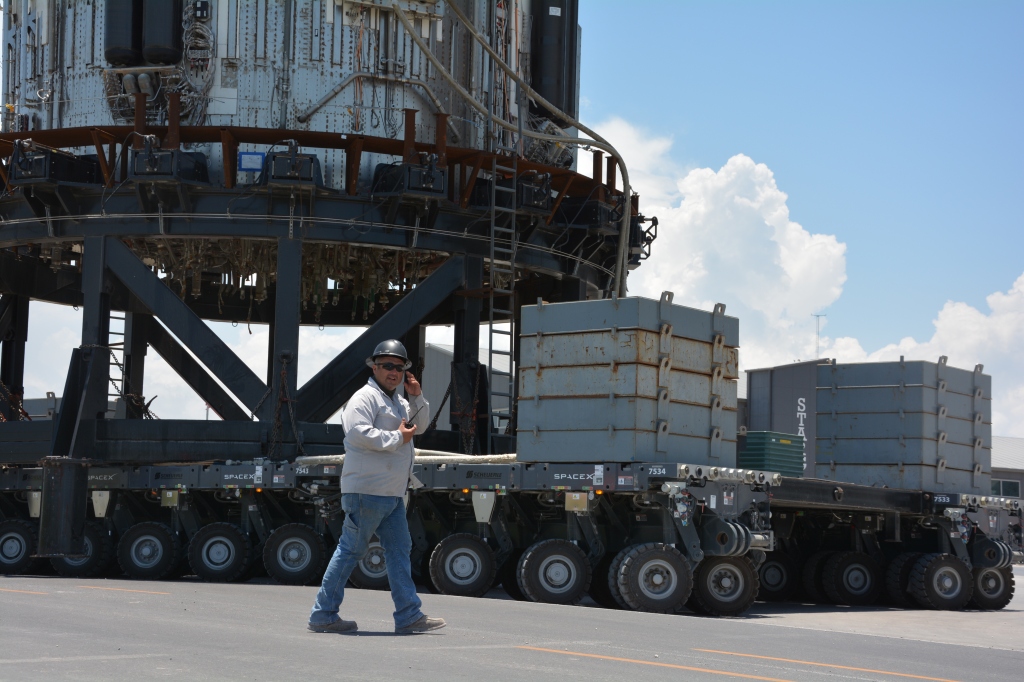By Anna Szolucha
We’ve just launched a rocket into orbit so why is the way we think about technology so fundamentally wrong?
A historic launch

Regardless of what one thinks about Elon Musk’s growing techno-industrial imperium, this week’s orbital launch attempt of the Starship/SuperHeavy system built by SpaceX has already made history. With its 33 Raptor 2 engines that can generate 7,590 tonne-force of thrust at lift-off, the Starship/Super Heavy spacecraft is the biggest and most powerful rocket ever built. It stands at 120 metres tall and may dwarf the payload capacity of the Saturn V rocket (that took astronauts to the Moon) by a factor of two. NASA has contracted a lunar lander variant of Starship – which is the upper stage of the space giant – to transfer humans (including the first woman and first person of colour) to the surface of the Moon. This will be the first time when astronauts’ feet will touch the lunar soil in over half a century. But Musk’s ambitions don’t stop there. Starship is also heralded as a vehicle that will land people on Mars and ultimately, help make humans a multi-planetary species.
Celebrated by some as a feat of engineering that represents a daring and futuristic vision, Starship is equally loathed by others who see it more as a self-serving caprice of a techno-celebrity and neo-colonialism. I spent months living and conducting ethnographic fieldwork next to SpaceX’s launch and production sites to find out what’s really in store for the local community in the area as well as the rest of us, Earth-bound creatures.
Future made in Texas

The road to Boca Chica where SpaceX is building and launching Starships keeps the local auto mechanics and tire shops busy. This tiny village at the very southern tip of Texas lies at the end of a long stretch of highway that is famous for its hair-raising potholes. However, the scenery changes dramatically once you arrive at “Starbase”. The large, illuminated sign staked in front of a container wall announces rather conspicuously that you’ve now entered the realm of the future that is not just pothole-free but also literally out of this world. SpaceX buildings are not accessible to the public but peeking into several tall bays from the main road, you can still catch a glimpse of the 9-m wide stainless-steel cylinders being stacked and welded on top of one another to create the next Starships. Continuing on, you pass by two graceful tracking dishes and the company restaurant affectionately called “Flaps” after the two repurposed prototype flaps that adorn the outside eating area. Just before reaching the beach, you can finally take a closer look at the glowing launch site where most of the testing takes place.
Watching the industrial processes at Starbase is fascinating—but even more than the testing of the shiny spaceships, I am interested in the local social world that has made the steel behemoths what they are. Boca Chica is not just a test and launch site for the biggest rocket ever built; to me, it is a testing ground for new human and social possibilities… on Earth and beyond. It matters then how the big players such as governments and the space industry prepare for the new era of spaceflight; but it matters even more what kind of social relations and worlds are actually being created by the people on the ground of these developments.
If we look from the top-down and pierce through the thin veil of egalitarian rhetoric, objective observers would be hard pressed to prove that space exploration is not a project of colonialism and further militarisation (Bowen, 2022; Schwartz et al., 2023). Several countries have implemented laws that allow their citizens to expropriate extra-terrestrial resources, challenging the long-established (but not necessarily observed) principle that space exploration “shall be carried out for the benefit and in the interests of all countries, irrespective of their degree of economic or scientific development, and shall be the province of all mankind.” Space has also long been used for military purposes and with such projects as SpaceX’s Starshield, the New Space industry is poised to fulfil a lot of “old space” functions in the service of state actors, which can raise a host of issues and put lives at risk, just as the tragic spectacle with Starlinks for Ukraine has shown.
Anthropologists know they have to take such global trends seriously but thanks to our licence to be nosy, we are also able to see what’s brewing under the surface. If we look at our possible social futures from this unique vantage point, I think that this time there are still reasons to be cautiously optimistic about space exploration. There’s one condition though – we should change the way we think about technology and about one another, which is to say the same thing twice.
Let me first draw you a picture of what kind of a place Boca Chica is, which is already a pretty loaded task but bear with me. Although Musk had famously said that Boca Chica was ideal as a launch site because “nobody” lived there, the area has rich wildlife and a rather painful history. The mud flats and dunes near the village are part of a wildlife preserve. Some local residents and environmental groups have protested against siting and operating the launch site in the vicinity of such a vulnerable habitat. The lands also hold special importance for the Indigenous community of the Esto’k Gna (also known as the Carrizo/Comecrudo Tribe of Texas). They are the native inhabitants of this area, yet they have seen their access to their traditional and burial sites severely limited not only by the operational requirements of SpaceX’s activities, but also the planned LNG infrastructure at the nearby port. Finally, the origins of the Boca Chica village in the 1960s are also marked by economic and social inequalities as well as suffering at the face of natural disasters. Known as Kopernik Shores, the village was originally meant to house first-generation Polish immigrants but was soon struck by a hurricane, the impacts of which reverberate to this day.
Today Boca Chica has become home to an army of SpaceX employees who have largely replaced local residents of the 30-odd houses in the village. Musk also has his main residence there. Mostly NDA-ed, however, it’s not the SpaceX crew that is keeping the spirit of technological awe and scientific wonder alive. Credit for that has to go to a diverse group of technologically savvy and resourceful individuals who have tied their personal lives and professional fates to that of Starship. They are interested members of the public who are not affiliated with the company but are either self-employed or work for bigger websites or YouTube channels. Many of the individuals that I spoke with during this research have uprooted their lives to come to Boca Chica and document the development of Musk’s spacecraft on a daily basis. The members of this TeamSpace, as they sometimes call themselves, are no strangers to job precarity, relying mainly on voluntary donations of other space fans. Although they may eat uncertainty for breakfast, it always comes at a price. Nevertheless, they continue to spread their passion by making Starbase accessible to a global audience. Locally, they mingle with space “pilgrims” (space enthusiasts from other parts of the country or the world) who visit Boca Chica arriving from near and far. The talents of teamspacers are often unique and their business plans – idiosyncratic so what makes them share a common passion for space exploration and this one steel rocket in particular? I’m dying to publish a full-scale academic paper on this one question but editors tell me that apparently, most people don’t have two years to spare, so I’ll try to sketch a partial answer below.
People and their rocket

One of my favourite moments captured by TeamSpace is a video of workers guiding the enormous SuperHeavy booster onto the orbital launch mount by pulling on long ropes by hand. It was a rare instance when the machine was revealed to be what it truly was; it was not an autonomous technological system that launched and landed itself, but an occasionally unruly catalogue of replicable social behaviours that is created and operated by humans.
Nobody understands these social aspects better than local YouTubers and photographers from TeamSpace. SpaceX almost never shares its operational plans with the public. Nevertheless, teamspacers are able to predict the company’s next steps with incredible accuracy, often just by observing the movements of workers and equipment around its production and launch sites. Thus, they’re always out in force and ready to capture the most historic or unique moments of the entire process like that manual handling of the booster . But what makes that video resonate even more is its deeper message. The attitude of the SpaceX workers shown in the video – their care, determination, strength and skill – literally shows what the rocket is made of. The bigger and better the rocket means the smarter, more skilful and more ambitious we are. The machine is a testament to who we “really” are and what we want.
Starship is, then, how society represents itself to itself. The rocket moulds into a physical form human fantasies and aspirations as well as a fair dose of crisis-induced anxiety, conflict and inequality. As such, it is a rich arena for social experimentation, a material index of human and social possibilities at a particular moment in our history. Unlike Musk’s vague plans of making our species multi-planetary, on the ground, Starship stands in for the human quest for knowledge, freedom, unity, aesthetic beauty, harmony, friendship, love and comradery in the here and now as well as in space. This is what transpires in the work of teamspacers. Their photos and film aim to capture history as well as the intricate details of a new technology. However, the way they approach their task suggests that they are pursuing more general ideals as well because their work often evokes such notions as harmony with nature or aesthetic beauty. The way they go about doing their work is a complicated set of tactics that are simultaneously geared towards generating income as well as attaining knowledge and friendship. Unfortunately, what’s often preserved in history are the intentions, decisions and artifacts produced by the most powerful and visible players and not those who work in the margins but nevertheless perform important labour that validates the project of space exploration for publics worldwide. Can this rocket preserve the liberatory and inspiring visions of people like TeamSpace?
Teamspacers are not the first to espouse those ideals; perhaps quite unexpectedly, they echo the narratives, imaginaries and aspirations of those whom we might rarely associate with projects led by flamboyant billionaires. Historically, Afrofuturists, for example, have regarded space as a realm of freedom and possibility where they could envisage and inspire ideas of Black liberation. For Indigenous communities, space has been human’s everyday companion so much so that they don’t see it as “outer” space but very much part of their lives. The problem is that our (US, western) understanding of technology screwed it all up.
If my great grandfather built a rocket…

…he would have probably been declared absolutely mad! Fortunately for him, his everyday work was much more down-to-earth. As a peasant blacksmith, he lived in a colony set away from the nearest tiny village in the very eastern part of Poland, but his workshop was always loud, full of people and teeming with activity and lively conversation. When I knew him, I was too little to assess the level of his skill, but I appreciated that his work was technologically and culturally complex. Villagers used to visit my granddad Daniel, as I called him, for various metallurgical products but they also believed that the water in which he quenched wrought iron to harden it would heal wounds, so they used his water bucket to cleanse cuts or bathe small children. This practice was partly cultural (metalworkers in many cultures are highly respected and believed to have special powers), partly scientific (iron infused, boiled water cleanses wounds better than untreated water) and partly technological (it relied on my great grandfather knowing the techniques of metalworking).
What if we thought about Starship like those villagers thought about iron smithing by my grandfather? What if we trained our imaginations to appreciate that the way for reaching the stars in a Starship i.e., attaining knowledge, unity and harmony, was not strictly technological but social and cultural as well? What if we recognised that technological and social innovation did not come from the apparent eureka moments (and individualised capital) of the elites but the accumulated wisdom and creativity of our species?
The oldest known underground mine was dug in today’s Eswatini in sub-Saharan Africa to extract ochre that was used as a pigment for body colouring and in burial ceremonies. The mine was used tens of thousands of years before mining was employed to extract resources for industrial use. Ancient Greeks are credited with inventing the principle of the steam engine and the first rocket but they only used it to open temple doors and fly wooden pigeons! For most of human history, then, complex technologies such as fabric weaving, metallurgy, mining, land transport, navigation of the oceans, cremation and many others were part of social rituals, everyday forms of work and play as well as games. And they still are, even with Starship! The engine maintenance platform isn’t called the dancefloor for nothing!
The problem is that technology isn’t often seen as part of an intricate social and cultural system. Instead, technology is often regarded as something extraneous to society and human technological activity is not perceived as inherently social in nature. In this understanding, humans have to “adapt” to new technologies as if they weren’t already deeply steeped in socio-cultural meanings and myths. As we’ve seen from the examples above, this view of technology is fundamentally wrong from a historical point of view (Graeber and Wengrow, 2021); however, the issue is made worse by the fact that this erroneous view has significant consequences for the ways in which we think about the relationship between technology and our lives. In particular, it makes us prisoners of our own creations and limits our imaginations in thinking about social alternatives.
People like TeamSpace are best positioned to see the rocket in a different way, being so close to the socio-technological processes that make both its outer shells as well as its cultural meaning. In fact, they’re an important part of making Starship as well because their work plays a crucial role in validating the idea of space travel. Accidentally, this understanding of technology as part of the cultural realm is not far from Indigenous teachings as well. I was humbled to learn from Esto’k Gna about some of their prophesies in which 21st-century technologies featured prominently (albeit in a rather negative way). Technology, like ritual, intensifies experience so there are things to be learned from both about how to strive for knowledge in a way that doesn’t bring about disorder in the cosmos.
If we could understand technology differently, would it be enough for Boca Chica to become a model for our future societies on Earth and perhaps even Mars? Probably not, but I feel that it would be a step in the right direction.
Space anthropology
Disciplinary envy between anthropologists and archaeologists is a bit of a thing so I sometimes wonder what future archaeologists would think of humans if they discovered Starship and had no other material to draw on to shed light on our contemporary culture. Would they conclude that we were an insatiable civilisation of colonisers and paranoid warriors? Or would they be able to unweave the intricate web of cultural meanings and liberatory aspirations? In other words, would they be able to even fathom that people like TeamSpace ever existed?
In the present, Starship will likely be a site of contestation. What anthropologists could do in this situation is to move onto the realm of thinking more expansively about space exploration. If almost everyone declares that space exploration could be about the good things, let’s take that at face value, insist that the declared intentions are followed through or use them for unintended purposes. It will be fun.

Anna Szolucha is the principal investigator in the ARIES project at the Institute of Ethnology and Cultural Anthropology, Jagiellonian University. Her work focuses on the intersections of society, technology and natural resources.
Works Cited/Bibliography
Bowen BE (2022) Original Sin: Power, Technology and War in Outer Space. Hurst Publishers.
Graeber D and Wengrow D (2021) The Dawn of Everything: A New History of Humanity. First Edition. New York: Farrar, Straus and Giroux.
Schwartz JSJ, Billings L and Nesvold E (2023) Reclaiming Space: Progressive and Multicultural Visions of Space Exploration. Oxford University Press.
Starbase Header photo taken from SpaceX Starbase Wikipedia.




